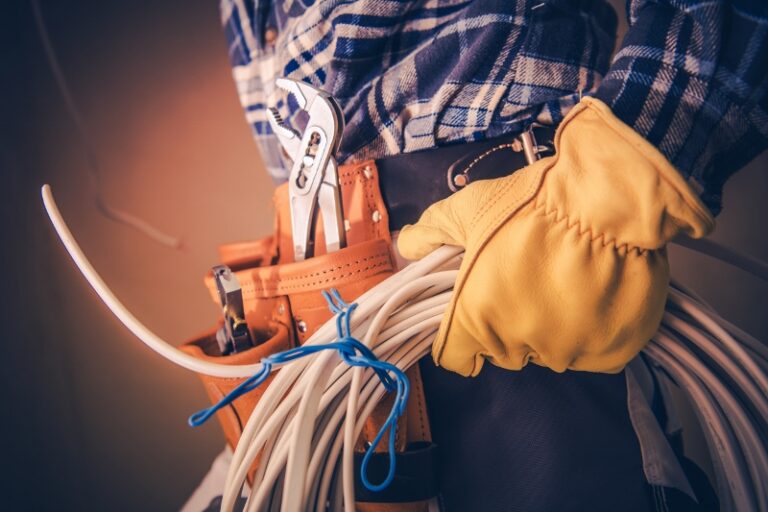There’s a palpable sense of accomplishment that comes from tackling DIY repairs around the home. In the world of DIY, electrical repairs hold a special place. The satisfaction of mending a faulty light switch, installing a new outlet, or even wiring a ceiling fan can be immense. Not to mention, it can save you money in the process. However, it’s a balancing act. Some electrical tasks are perfect for the DIY-enthusiast, while others demand the expertise of a professional electrician. This post will navigate this delicate equilibrium, guiding you on when to roll up your sleeves and when it’s best to dial an electrician.
Understanding Safety
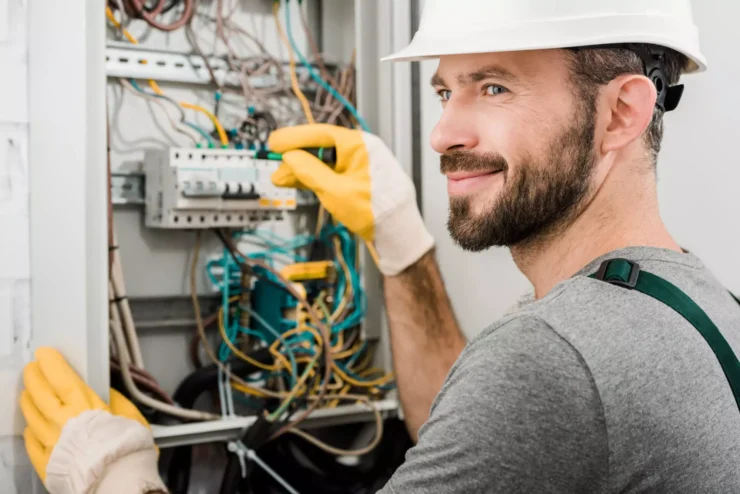
Before diving into any DIY electrical repair, your safety is paramount. Electricity, while invisible and silent, is immensely powerful and potentially lethal. Mishandling can lead to electrical shocks, fires, or even fatal accidents. Knowing how to safely navigate the electrical landscape of your home is an essential foundation for any DIY electrical repair. Always remember to turn off the power at the circuit breaker before starting your work, use insulated tools, and never touch wiring or switches with wet hands or when standing on a wet or damp floor. And remember, if you’re ever in doubt, it’s best to call a professional.
Basic Electrical Repairs
Believe it or not, many electrical repairs are quite manageable. Replacing light switches, installing outlets, and changing light fixtures can all be accomplished with some basic knowledge and the right tools. These projects typically involve straightforward steps: turning off the power, removing the old fixture or outlet, connecting the wires to the new component, and reassembling. However, they still require precision and an understanding of how electrical systems work. It’s crucial to ensure wires are correctly and safely connected to prevent shorts or overloads.
Electrical Troubleshooting
When your lights flicker or your circuit breaker trips repeatedly, the first step towards fixing the issue is diagnosing the problem. Understanding how to troubleshoot these issues is essential for any DIY enthusiast. Start by checking for overloads or short circuits if a breaker trips frequently.
For flickering lights, the culprit could be a loose light bulb or a problem with the light fixture itself. However, if these issues persist after your initial checks and corrections, it’s time to call a professional. Persistent problems could signal deeper issues that require an expert’s touch.
DIY Wiring Projects
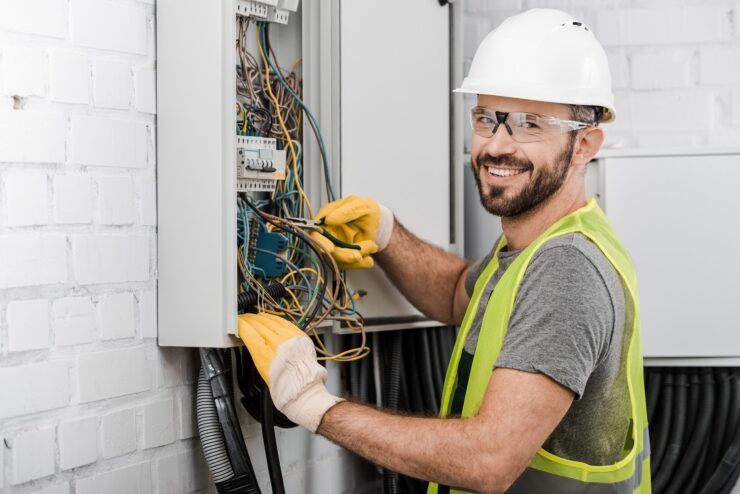
Installing a ceiling fan or adding a new circuit to your home can be rewarding projects, but they’re also more complex and come with greater risks. They often involve interacting with your home’s wiring system more directly and extensively. While these projects are within the realm of DIY, they demand a solid understanding of electrical work, including how to route and connect wires correctly, and knowledge of your home’s electrical capacity. If these projects seem daunting, don’t hesitate to hire an electrician.
Electrical Permits and Codes
Electrical work isn’t just about connecting wires; it’s also about adherence to local codes and obtaining the necessary permits. These codes and permits are designed to ensure the electrical work is safe and up to standard.
For DIY enthusiasts, understanding what work requires a permit, how to get one, and how to stay within the codes is crucial. However, navigating these legal requirements can be complex and time-consuming. In many cases, hiring an electrician can help ensure compliance with minimal stress.
When to Call an Electrician
Knowing when to call an electrician can save you from potential dangers and costly mistakes. Some scenarios call for a professional’s expertise, such as complex wiring projects, electrical panel upgrades, or when dealing with electrical emergencies.
In addition, when you’re dealing with older homes or extensive remodels, an electrician’s knowledge and experience are invaluable. Remember, there’s no shame in calling a pro when the project exceeds your skill level, especially when safety is on the line. If you don’t know when is the right time to call an electrician and how a professional could help, you should learn more.
Safety Precautions
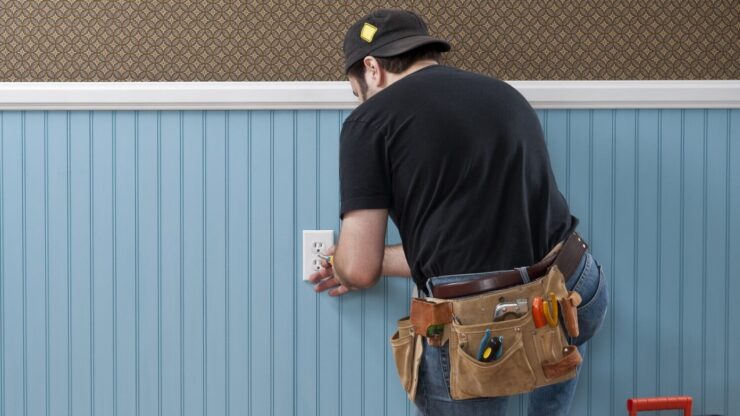
DIY electrical work isn’t a casual endeavor—it requires serious safety precautions. Always turn off the power at the source before starting any electrical work. Use only insulated tools to protect yourself from accidental shocks. Wear protective eyewear to shield yourself from sparks or debris, and consider wearing rubber-soled shoes for added insulation. Keep your work area dry and clear of flammable materials.
Tools and Equipment
Having the right tools is crucial for DIY electrical repairs. Some essential tools include a multimeter for voltage testing, wire cutters and strippers for handling wiring, needle-nose pliers for bending and gripping wires, and a non-contact voltage tester for quickly and safely checking for live wires.
Additionally, it’s important to have electrical tape, wire nuts, and a reliable flashlight in your toolkit. These tools will enable you to perform electrical tasks more efficiently and safely. Before undertaking any DIY electrical project, ensure that you have the necessary tools on hand and familiarize yourself with their proper usage.
Remember, using the right tools for the job not only enhances your effectiveness but also helps mitigate potential risks and promotes a successful outcome.
DIY Electrical Resources
If you’re eager to learn more about DIY electrical work, numerous resources can guide you. Websites like Family Handyman, YouTube channels like Sparky Channel, or books like ‘Wiring a House’ by Rex Cauldwell are all excellent sources of knowledge. They provide step-by-step tutorials, safety tips, and guidance on a wide range of topics, helping you broaden your understanding of DIY electrical repairs.
Knowing Your Limits
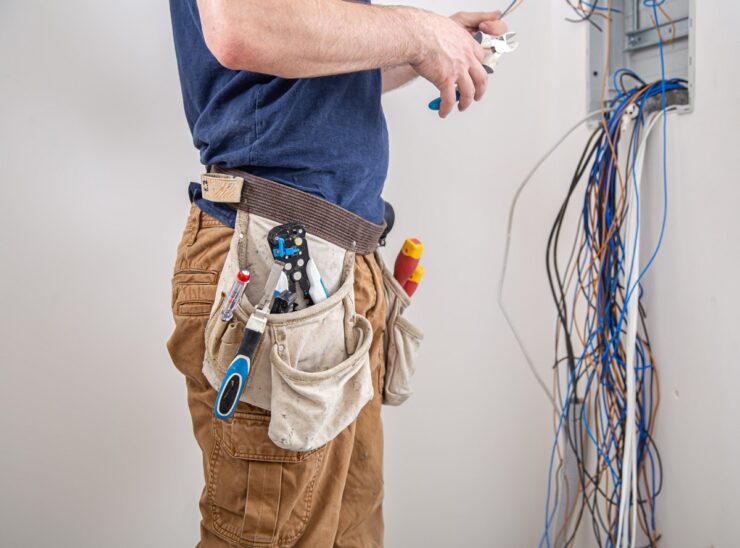
The world of DIY is all about expanding skills and taking on new challenges, but electrical work should be approached with caution. It’s crucial to assess your abilities honestly and recognize when a project is beyond your expertise.
Electrical tasks involve significant risks and complexities that require a thorough understanding of systems, regulations, and safety protocols. Being humble and prioritizing safety is essential. Don’t hesitate to call a professional when needed to ensure the proper handling of electrical repairs and installations.
By acknowledging your limitations and seeking professional help when necessary, you can avoid potential hazards and ensure the safety of yourself and your home.
Conclusion
The realm of DIY electrical repairs can be rewarding but also fraught with dangers. Tackling a simple switch replacement or diagnosing a tripped breaker can save money and offer a sense of accomplishment. However, it’s crucial to prioritize safety, adhere to local codes, use the right tools, and know when to call a professional. By understanding your limits and never taking unnecessary risks, you can enjoy the satisfaction of DIY while keeping your home safe and well-powered.

